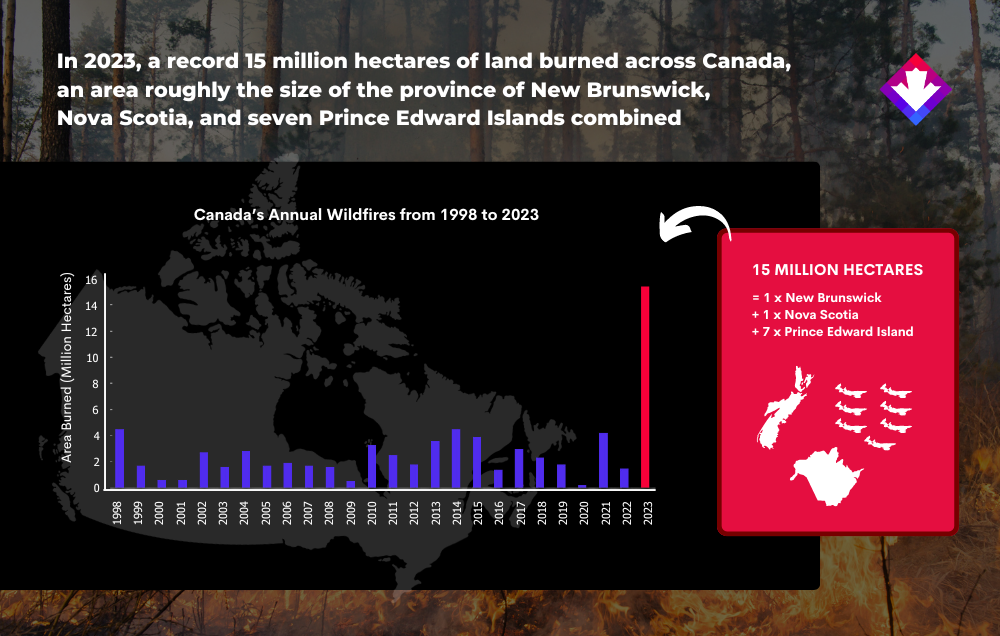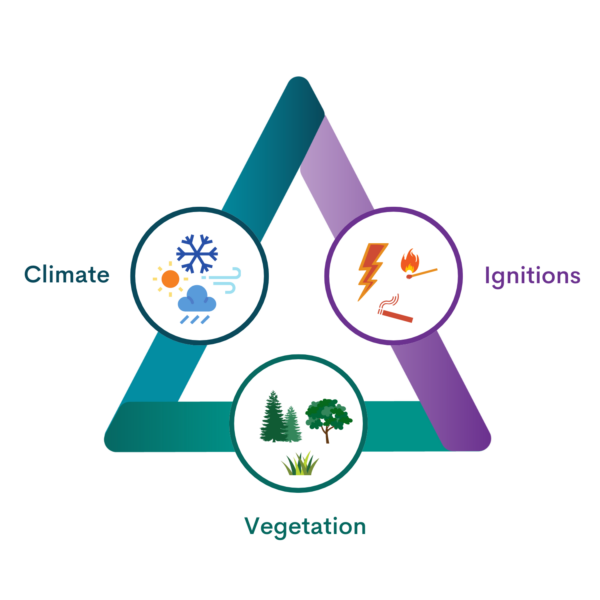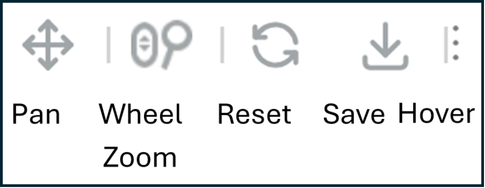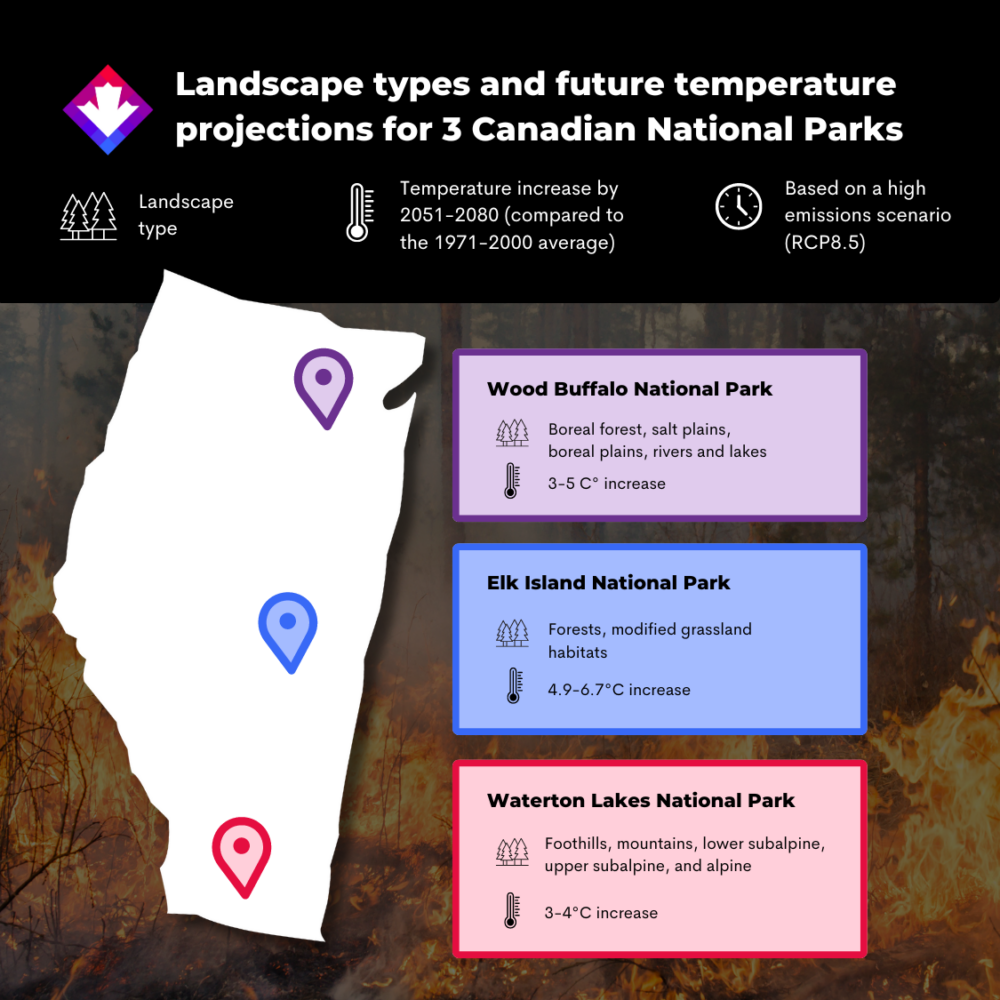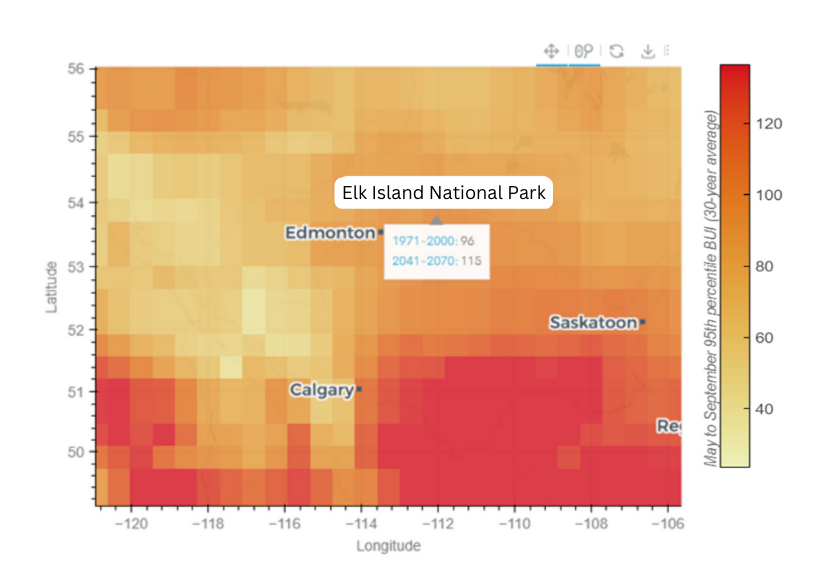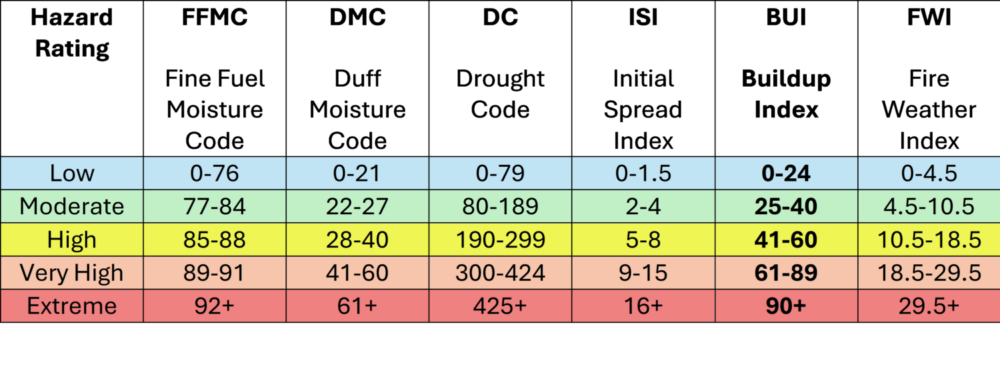Case Study 1: Exploring projected changes in fire season length in Waterton Lakes National Park
The fire season refers to the period of the year when the weather is warm enough to support wildfire occurrence, growth and spread.
In this case, we are looking at how the fire season length is expected to change in Waterton Lakes National Park, in a high emissions scenario (RCP8.5), by mid-century (2041-2070). Zooming into the map and hovering over a region close to the park reveals the following historical map:
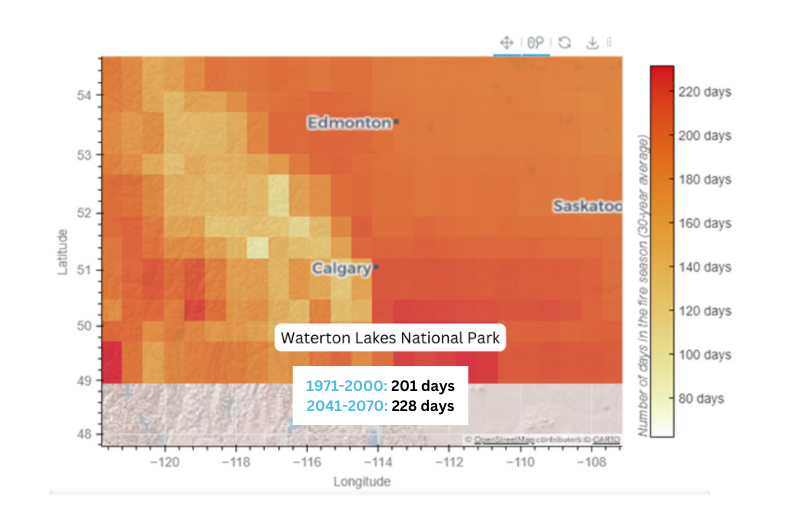
Over the modelled historical period of 1971-2000, Waterton Lakes National Park experienced a fire season length of 201 days (about 6 and a half months). Since this is a gridded historical value, it will be slightly different from the season length computed using observed weather station data. The 2041-2070 value under a high emissions scenario (RCP8.5) is 228 days (about 7 and a half months), or a 27 day (about 4 weeks) increase from the historical baseline. It is important to note that both the historical and future values are 30-year averages, meaning the years within these periods will vary from shorter to longer fire season lengths.
Also, as mentioned in the above section, many other factors combine to determine the pattern, frequency, and intensity of wildfires in a region, including the availability of fuel (i.e., vegetation), the land-use type (e.g., towns, topography), and ignition sources (e.g., lightning, human-caused fires). Therefore, the change in fire season length shown here does not predict with certainty that there will be more fires in the future. Instead, it is a metric for comparing two time periods to understand how fire danger may shift because of climate change.
